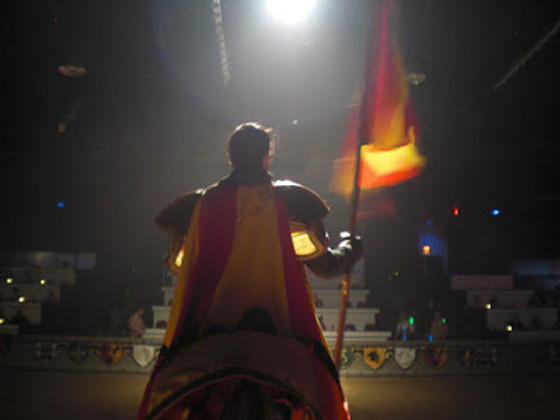Of The Sword And The Dubbing
Posted by Sword N Armory on Apr 1st 2018

In spite of what's shown in film and what's written in modern day romances, knighting ceremonies weren't always full of long nights spent in prayer. Nor were there day long celebrations of the advancement of a squire to knighthood. The ceremony had humble beginnings with a practical purpose in mind.
The earliest accounts of any formal knighting ceremony come in the 12th century. With its roots tied to the coming-of-age ceremony among Germanic youth in the 11th century, the invention of knighthood created a need for a symbolic ascension. Thus it was, that Germany, France, and Britain started the use of the old Germanic custom of buckling a sword to the waist of the newly created knight. At this time, the idea of chivalry hadn't yet been uttered. The need was for warriors that were loyal to the local noble. The feudal system needed it defenders and the local noble were going to get them. The sword became the focus of the ceremony since it was the symbol of strength. Soon after the services became general custom, the nobles began providing the swords with which the new knights were girted. Thus, the ceremony that had once been a family affair became a matter of state in which the noble became the dominant player.
When the Crusades became a driving force in Europe, the ceremony of knighthood demanded a more religious presentation and the church became involved in the dubbing ceremony. By the 13th century and well into the 14th century, the church had established the system of prayer and oaths that we're familiar with today. The swords were still the center symbol, but about the Sword were the Spurs and the Shield. Aside from the physical symbols there were the virtual ones that marked the age of chivalry. There were the vows to honor and help the weak and any helpless women. There were the oaths to uphold the church and its values. There were the oaths to defend the local noble as well as the king. There were the oaths to observe all religious holidays. Many were the obligations of a knight.
After the oaths came the “dubbing.” Once again the sword became a central symbol. Usually administered by another knight, or the local noble, or the king or queen, these “dubbings” would take the form of a virtual caress. The sword’s first touch is on the right shoulder, and then the left shoulder after passing close to the top of the head of the emerging knight. This symbolized the trust both parties had one-to-the-other. Without the provided sword, the ceremony is not complete.












